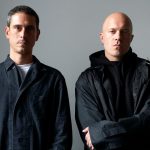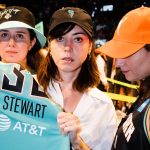Sid Mashburn is working door duty when I show up at his new shop on Madison Avenue, in Manhattan. Every single time a person walks up, Mashburn excuses himself for a moment, opens the door, says hello, and then asks the guests if they’d want some water, espresso, or a Coke. We may be on the Upper East Side, but Mashburn was born in Mississippi and started his coast-to-coast menswear empire in Atlanta in 2007, where he still lives. Alongside racks and racks of made-in-Italy suits and understated natural-fiber sportswear, he’s imported the Southern hospitality, right down to the place Coca-Cola sits in the regional lexicon as a stand-in for carbonated beverages. He apologizes to me each time he comes back. “The door is heavy,” he tells me. “I hate that—it’s like a hurdle, I don’t want that for anybody, you know?”
When Mashburn has to step away, I’ve got the perfect vantage point to see just who, exactly, is showing up to the opening of his first New York City store. We’re in Whit Stillman country, after all, the area of town Patrick Bateman from American Psycho hung out, where Gossip Girl was set. In 20 minutes, I clock enough takes on the stereotypical local for a look book. There’s the guy in his 70s with his fraying Oxford shirt and Martha’s Vineyard dad hat, sun-faded, presumably from too many hours out on the family sailboat. Another guy around the same age comes in with a woman who’s about 30 or 40 years his junior—I assume it’s not his daughter in the way he puts his hand on her behind. He’s in a navy suit, an ascot around his neck, and his Cartier Tank matches his companion’s. The next guy has a fancy watch—and is wearing a polo shirt tucked into khaki shorts. He looks to be in his 30s, but I can only assume he’s been rocking the same look since grade school. A woman about his age says something about how “this guy makes the sort of clothes you should be wearing.”
The store has lots to offer New Yorkers of all stripes: Given that Mashburn’s Kinkaid No. 2 suit is a mainstay GQ recommendation for the best suit under $1,000, guys getting ready for their first job interview from across the five boroughs should make the trek. But Mashburn’s fresh updates on conservative menswear staples might have a special appeal to guys you are likely to find on the Upper East Side. You’ve got the old-school preps that will wear down clothes to the last bits of fabric out of some old Puritan sense of thriftiness (but who can come off as cool and casual). Then you have the guys who work in tech or on Wall Street who crush decks and spreadsheets in stretch chinos and Patagonia vests. Mashburn’s move to the neighborhood offers both groups something they can like. The old guard will find something familiar, perhaps from their school days, and the millennial bankers can get a lesson in how to dress better just by looking around and talking to the staff.
Mashburn says he wouldn’t rule out a store below 14th Street someday, and says he counts plenty of downtown guys as influences—he calls out the late Tom Verlaine during his band Television’s Marquee Moon era, for one. But the core of his sensibility descends from old-school American sportswear, the kind you might see in Take Ivy or on 1950s jazz icons. It’s a sweet spot between cool and dressed up that fits the neighborhood well. So he’s a few blocks from iconic burger and martini spot J.G. Melon and less than five minutes from Central Park, in a neighborhood largely free of the brand activations and direct-to-consumer companies that have taken over large swaths of downtown. He’s also down the street from other prep staples like Brooks Brothers and J.Crew. But Mashburn offers something different, which is part of why it’s taken him a bit to find the right place in New York City. Do you know the names of the brothers’ Brooks? Does the J in J.Crew stand for anything? They’re huge brands that are part of multinational conglomerates, bought and sold a few times. Sid Mashburn belongs to the guy opening the door.
“My grandparents had a furniture store, hardware store, an implement store, and a clothing store in a chicken town in Mississippi—three chicken towns. They were concurrent with each other.” Before my Yankee ass can ask what makes something a chicken town, Mashburn explains that he figured out it was in his DNA a long time ago to help people in person, to give them a place to go and feel like they’re at home. He’s a seasoned apparel veteran who has seen plenty of what works and what doesn’t, but everything you see in his store has a personal touch. That’s the big difference between Mashburn and some of the places he’s worked for or the stores in the neighborhood.



